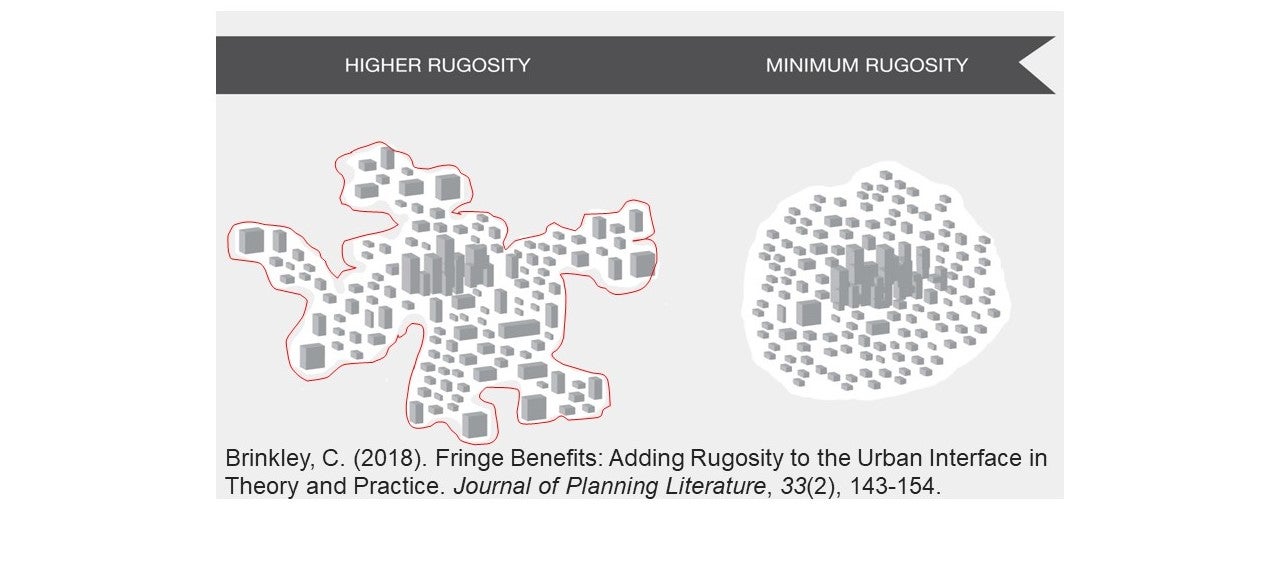When the Stranger says: “What is the meaning of this city?
Do you huddle close together because you love each other?”
What will you answer? “We all dwell together
To make money from each other”? or “This is a community”?-T.S Elliot, The Rock (1934)
In addition to applied research, our lab is focused on furthering the science of urban planning. Much of the world’s most productive farmland lies in the direct path of urban expansion, competing economically with housing markets. Accommodating growth requires an understanding of both urban form and both its influence on and its response to surrounding land-uses. Much of the current research on urban areas is focused on distance to the urban center and on how larger cities produce more per capita in terms of patents and GDP and use less resources per capita in the miles of sewer, roads and building materials used. Yet, simply clustering more people together does not yield such outcomes, and greenspace in urban areas is highly desired, economically valued and important to health outcomes.
Our research challenges many dominate models of urban development with a new model that considers urban and non-urban lands as equally important for sustainable development. We ground our model of urban development in the biological and ecological sciences. Ecologists have identified structural complexity as important to ecosystem growth and resilience. Structural complexity fosters niches. The presence of niches allows for a diversity of uses. Such diversity fosters resilience in the face of natural disasters, disease or extinction. For example, the structural complexity of a coral reef correlates with the availability of habitat niches and related coral biodiversity, total reef species, reef growth and resilience to stressors and disasters. We posit that cities similarly benefit from being infused with non-urban greenspace.
We measure structural complexity using rugosity (urban perimeter measurements) and perfusion (the amount of urban area within a certain distance of the urban perimeter). Our research measures the structural complexity of urban areas in relation to urban and agricultural growth (land values, population growth, production), shared metabolism (supply chains, resource use), and resilience (response to economic and natural disaster).

Scientific Publications
- Brinkley, C. and Raj, S (2022). Perfusion and urban thickness: The shape of cities. Land Use Policy.
- Brinkley, C. and Stamer, C. (2021). What Is in a Plan? Using Natural Language Processing to Read 461 California City General Plans. Journal of Planning Education and Research.
- Brinkley, C. (2019) Rugosity and the Urban Interface. Annals of the American Association of Geographers.
- Brinkley, C. (2018) High Rugosity Cities: the geographic, economic and regulatory pathology of America’s most non-concentric urban areas. Land Use Policy.
- Brinkley, C. (2017). Fringe Benefits: Adding Rugosity to the Urban Interface in Theory and Practice. Journal of Planning Literature, 0885412217726772.
- Brinkley, C. (2012). Evaluating the Benefits of Peri-Urban Agriculture. Journal of Planning Literature . 27(3). 259269.